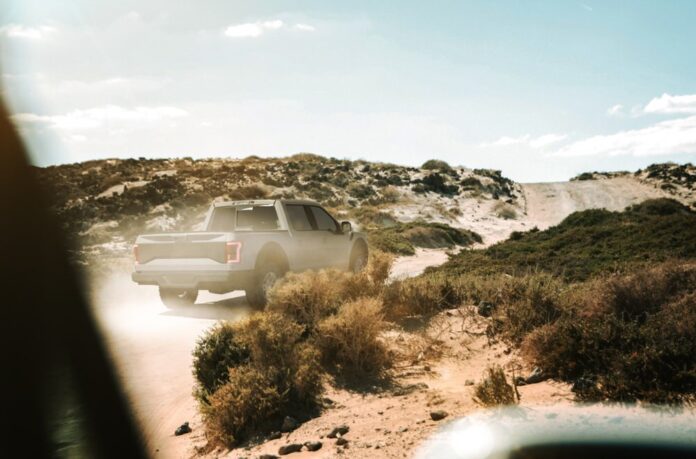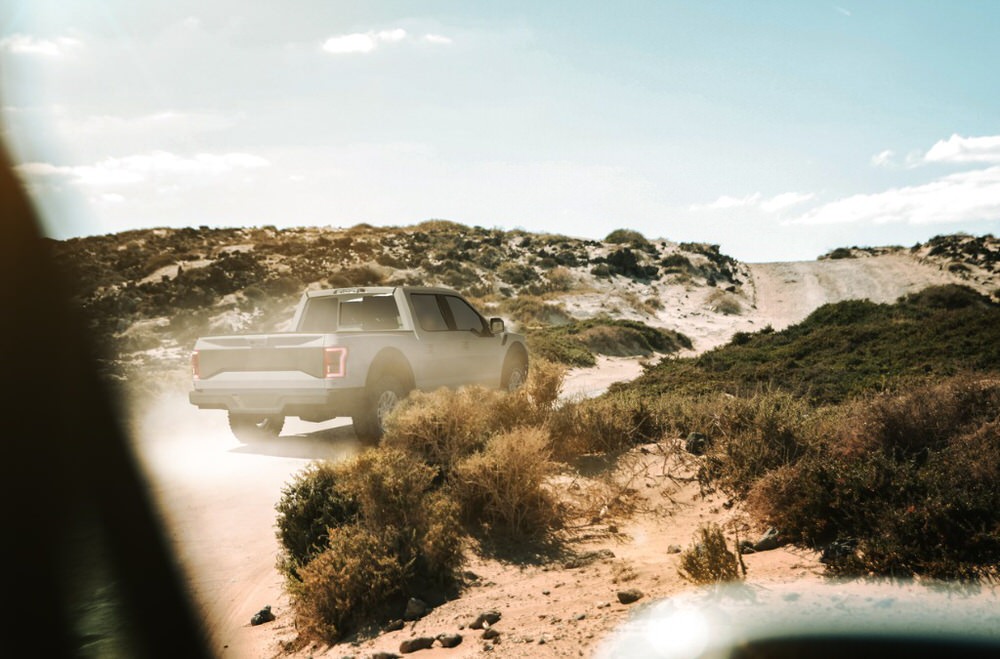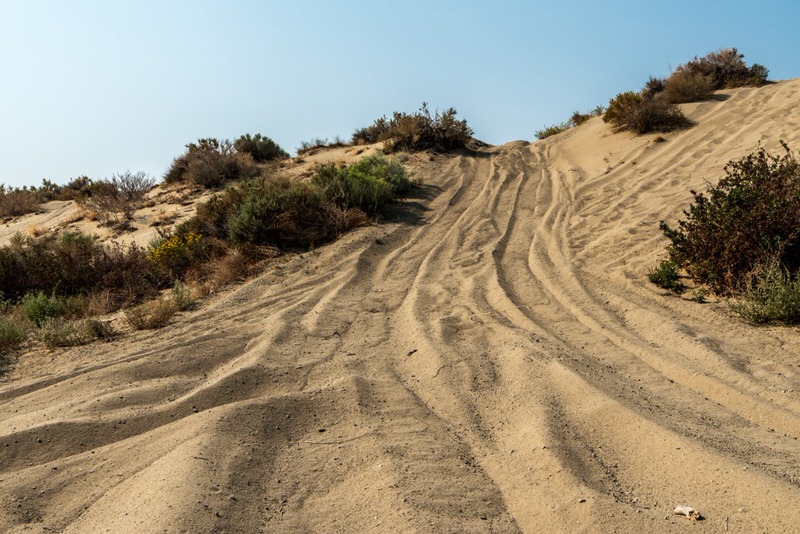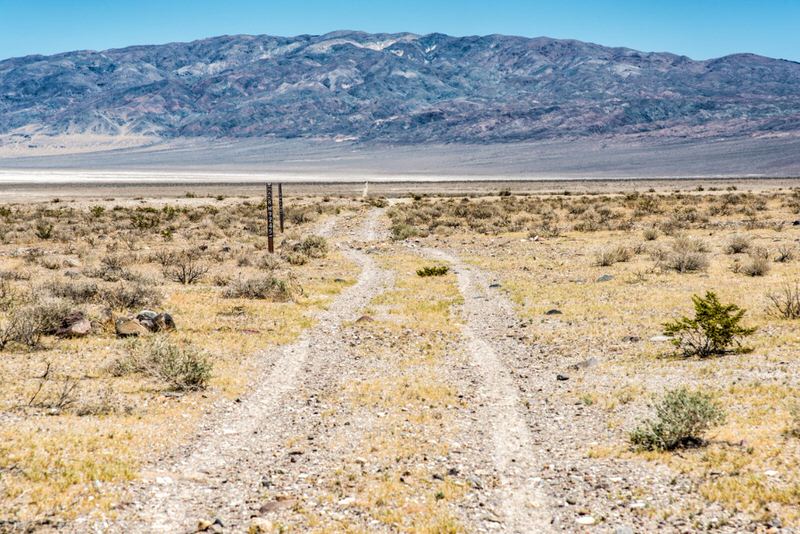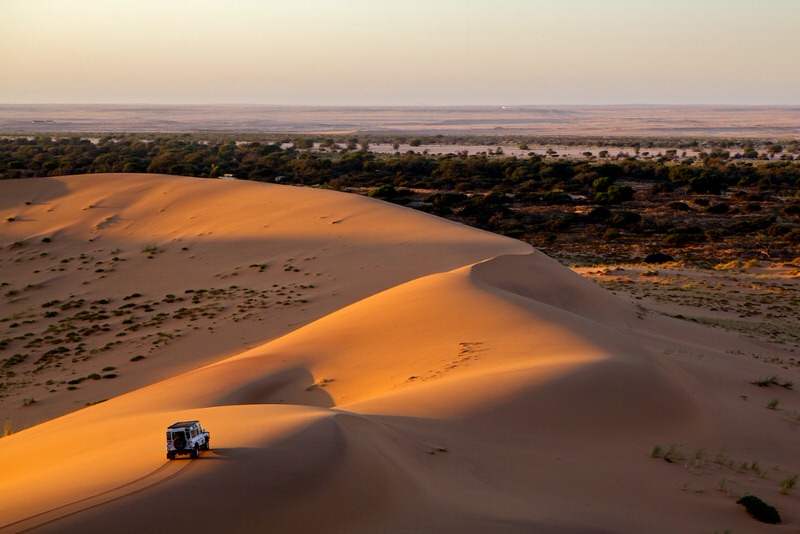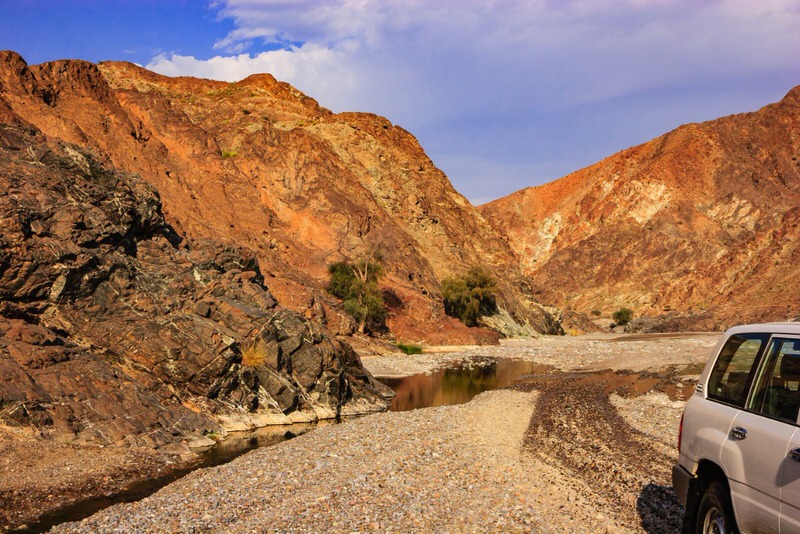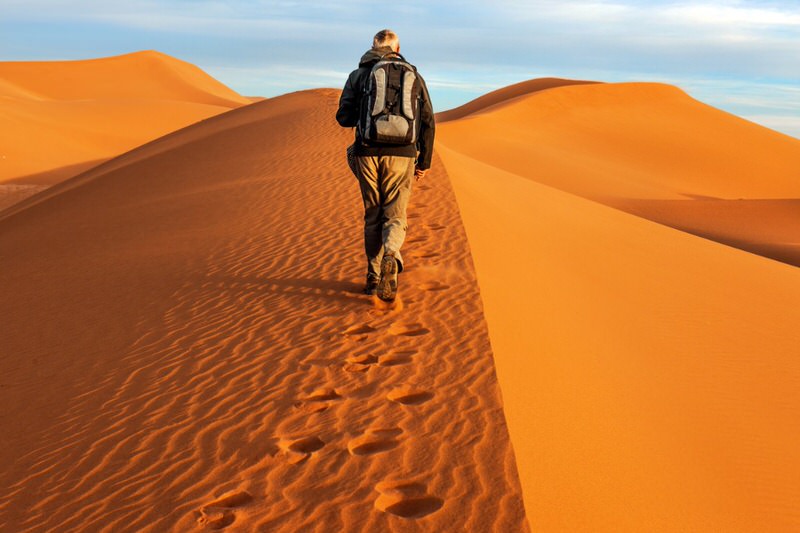Photo by paulbranding via iStock
Off-roading in the desert can be a blast…
It’s fun to get out for an afternoon in the sun and sand and explore the beauty of a desert landscape. But if you don’t know what you’re doing, it can also turn into a nightmare.
If you’ve never been off-roading in the desert before, check out these easy tips for having fun and staying safe.
If You Go Down a Hill, You Might Need to Come Back Up
Photo by MarieKazPhoto via iStock
If you ask me, driving down steep hills or sand dunes is one of the most fun parts of off-roading in the desert.
But remember that if you go down a hill, your only way out might be to come back up it. If it’s extremely steep or sandy, this could cause problems for an ascent.
The best thing to do is get out of your vehicle before you descend a hill to see if there’s a clear path back up it. If there isn’t, scope out other means of egress so you aren’t stuck with no way to get out.
Remember that if you’re going down a hill and someone is coming up the same hill at the same time, they have the right of way. Give them the space they need to ascend the hill.
Off-Roading in the Desert: Stay on Top of Ruts
Photo by Art Wager via iStock
Desert off-roading can mean driving on established trails or you might find yourself driving across sand.
When you’re on an established trail, don’t drive in the ruts. Instead, stay on top of them. Sometimes ruts will be so deep that your vehicle drags bottom, which can obviously lead to severe damage to your vehicle. By riding on top of the ruts, you will have much less worry about that.
If you’re on sand, though, drive in any ruts you can find. Sand that’s been compacted due to vehicle travel is less likely to swallow your tires and lessen the likelihood that you get stuck.
Regardless of the surface on which you’re driving in the desert, be sure you have your rig in four-wheel drive before you need it. Having a 4WD vehicle doesn’t do you any good if you only think to utilize four-wheel drive after you’re stuck!
Learn More:
Driving in Sand Requires More Speed
Photo by evgenyvasenev via iStock
One of the first rules of off-roading is to take it slow on the trail. Doing so will help prevent unnecessary damage to your vehicle.
But…when you need to travel across deep sand, a little speed is a good thing. This doesn’t mean you should floor it and do 55 mph across the desert sand. Instead, when off-roading in the desert, maintain a slightly faster speed than normal, use higher gears, and ensure that you don’t spin the tires, as that is a sure-fire way to get stuck.
Of course, you should also deflate your tires before heading into a sandy area, that way there’s more surface area for each tire to find traction. Just don’t forget to air them back up once you’re off the sand!
Off-Roading in the Desert: Be Prepared
Photo by ChandraDhas via iStock
This is a “prepare for the worst, hope for the best” situation.
Obviously, the desert presents some challenges to your health and safety if you were to get stuck or lost. The oppressive heat during the day, the lack of fresh water, and the cold of the night are just three concerns.
So, when you head out for a day trip in the desert, take plenty of food and water with you. Use sunscreen, wear a hat and long sleeves to prevent sunburns, and bring warm clothing in case you have to spend the night in the desert.
Additionally, if you get stuck, stay with your vehicle. It’s a lot easier for people to spot a stuck 4WD than it is to spot you wandering around aimlessly in the desert.
Get out of the sun if you can, but also ensure that you’re visible to rescuers. Having a space blanket that you can use as an awning that will simultaneously reflect light and bring attention to your position.
Photo by Pavliha via iStock
If you are familiar with your surroundings and are positive as to the direction you need to go to get help, hiking out might be a better option. Just don’t hike during the day. The heat of the day can be a killer, so hiking at night is the much better option.
Of course, you also need to stay calm. Getting stuck or breaking down (even in a place that you know well) can be extremely distressing. Getting stressed out and panicking will not help your situation. Instead, use your time to be constructive, to improve your situation, and to make a plan for survival.
Many folks that go off-roading in the desert never have to put their plans for getting stuck or breaking down into action. That’s a good thing! But it’s better to have that plan just in case than it is to go out there unprepared.



